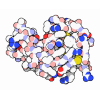Entry Database : PDB / ID : 3vw7Title Crystal structure of human protease-activated receptor 1 (PAR1) bound with antagonist vorapaxar at 2.2 angstrom Proteinase-activated receptor 1, Lysozyme Keywords / / / / / / / / / Function / homology Function Domain/homology Component
/ / / / / / / / / / / / / / / / / / / / / / / / / / / / / / / / / / / / / / / / / / / / / / / / / / / / / / / / / / / / / / / / / / / / / / / / / / / / / / / / / / / / / / / / / / / / / / / / / / / / / / / / / Biological species Homo sapiens (human)Method / / / Resolution : 2.2 Å Authors Zhang, C. / Srinivasan, Y. / Arlow, D.H. / Fung, J.J. / Palmer, D. / Zheng, Y. / Green, H.F. / Pandey, A. / Dror, R.O. / Shaw, D.E. ...Zhang, C. / Srinivasan, Y. / Arlow, D.H. / Fung, J.J. / Palmer, D. / Zheng, Y. / Green, H.F. / Pandey, A. / Dror, R.O. / Shaw, D.E. / Weis, W.I. / Coughlin, S.R. / Kobilka, B.K. Journal : Nature / Year : 2012Title : High-resolution crystal structure of human protease-activated receptor 1Authors : Zhang, C. / Srinivasan, Y. / Arlow, D.H. / Fung, J.J. / Palmer, D. / Zheng, Y. / Green, H.F. / Pandey, A. / Dror, R.O. / Shaw, D.E. / Weis, W.I. / Coughlin, S.R. / Kobilka, B.K. History Deposition Aug 7, 2012 Deposition site / Processing site Revision 1.0 Dec 12, 2012 Provider / Type Revision 1.1 Aug 14, 2013 Group Revision 1.2 Aug 16, 2017 Group / Source and taxonomy / Category / pdbx_unobs_or_zero_occ_atomsRevision 1.3 Nov 22, 2017 Group / Category Item _software.classification / _software.contact_author ... _software.classification / _software.contact_author / _software.contact_author_email / _software.date / _software.language / _software.location / _software.name / _software.type / _software.version Revision 1.4 Nov 8, 2023 Group Advisory / Data collection ... Advisory / Data collection / Database references / Derived calculations / Refinement description / Structure summary Category chem_comp / chem_comp_atom ... chem_comp / chem_comp_atom / chem_comp_bond / database_2 / entity / pdbx_entity_nonpoly / pdbx_initial_refinement_model / pdbx_struct_conn_angle / pdbx_unobs_or_zero_occ_atoms / struct_conn / struct_ref_seq_dif / struct_site Item _chem_comp.name / _database_2.pdbx_DOI ... _chem_comp.name / _database_2.pdbx_DOI / _database_2.pdbx_database_accession / _entity.pdbx_description / _pdbx_entity_nonpoly.name / _pdbx_struct_conn_angle.ptnr1_auth_comp_id / _pdbx_struct_conn_angle.ptnr1_auth_seq_id / _pdbx_struct_conn_angle.ptnr1_label_asym_id / _pdbx_struct_conn_angle.ptnr1_label_atom_id / _pdbx_struct_conn_angle.ptnr1_label_comp_id / _pdbx_struct_conn_angle.ptnr1_label_seq_id / _pdbx_struct_conn_angle.ptnr3_auth_comp_id / _pdbx_struct_conn_angle.ptnr3_auth_seq_id / _pdbx_struct_conn_angle.ptnr3_label_asym_id / _pdbx_struct_conn_angle.ptnr3_label_atom_id / _pdbx_struct_conn_angle.ptnr3_label_comp_id / _pdbx_struct_conn_angle.ptnr3_label_seq_id / _pdbx_struct_conn_angle.value / _struct_conn.pdbx_dist_value / _struct_conn.ptnr1_auth_comp_id / _struct_conn.ptnr1_auth_seq_id / _struct_conn.ptnr1_label_asym_id / _struct_conn.ptnr1_label_atom_id / _struct_conn.ptnr1_label_comp_id / _struct_conn.ptnr1_label_seq_id / _struct_conn.ptnr2_auth_comp_id / _struct_conn.ptnr2_auth_seq_id / _struct_conn.ptnr2_label_asym_id / _struct_conn.ptnr2_label_atom_id / _struct_conn.ptnr2_label_comp_id / _struct_ref_seq_dif.details / _struct_site.pdbx_auth_asym_id / _struct_site.pdbx_auth_comp_id / _struct_site.pdbx_auth_seq_id Revision 1.5 Nov 20, 2024 Group / Category / pdbx_modification_feature
Show all Show less
 Yorodumi
Yorodumi Open data
Open data Basic information
Basic information Components
Components Keywords
Keywords Function and homology information
Function and homology information Homo sapiens (human)
Homo sapiens (human) Enterobacteria phage T4 (virus)
Enterobacteria phage T4 (virus) X-RAY DIFFRACTION /
X-RAY DIFFRACTION /  SYNCHROTRON /
SYNCHROTRON /  MOLECULAR REPLACEMENT / Resolution: 2.2 Å
MOLECULAR REPLACEMENT / Resolution: 2.2 Å  Authors
Authors Citation
Citation Journal: Nature / Year: 2012
Journal: Nature / Year: 2012 Structure visualization
Structure visualization Molmil
Molmil Jmol/JSmol
Jmol/JSmol Downloads & links
Downloads & links Download
Download 3vw7.cif.gz
3vw7.cif.gz PDBx/mmCIF format
PDBx/mmCIF format pdb3vw7.ent.gz
pdb3vw7.ent.gz PDB format
PDB format 3vw7.json.gz
3vw7.json.gz PDBx/mmJSON format
PDBx/mmJSON format Other downloads
Other downloads 3vw7_validation.pdf.gz
3vw7_validation.pdf.gz wwPDB validaton report
wwPDB validaton report 3vw7_full_validation.pdf.gz
3vw7_full_validation.pdf.gz 3vw7_validation.xml.gz
3vw7_validation.xml.gz 3vw7_validation.cif.gz
3vw7_validation.cif.gz https://data.pdbj.org/pub/pdb/validation_reports/vw/3vw7
https://data.pdbj.org/pub/pdb/validation_reports/vw/3vw7 ftp://data.pdbj.org/pub/pdb/validation_reports/vw/3vw7
ftp://data.pdbj.org/pub/pdb/validation_reports/vw/3vw7
 Links
Links Assembly
Assembly
 Components
Components Homo sapiens (human), (gene. exp.)
Homo sapiens (human), (gene. exp.)  Enterobacteria phage T4 (virus)
Enterobacteria phage T4 (virus)

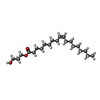







 X-RAY DIFFRACTION / Number of used crystals: 18
X-RAY DIFFRACTION / Number of used crystals: 18  Sample preparation
Sample preparation SYNCHROTRON / Site:
SYNCHROTRON / Site:  APS
APS  / Beamline: 23-ID-B / Wavelength: 1.033 Å
/ Beamline: 23-ID-B / Wavelength: 1.033 Å Processing
Processing MOLECULAR REPLACEMENT
MOLECULAR REPLACEMENT Movie
Movie Controller
Controller



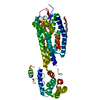
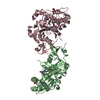
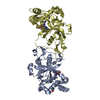

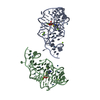
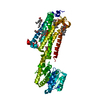
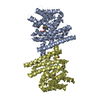
 PDBj
PDBj